About the rack & pinion system
Most railways use simple adhesion of rail wheels on the rails to move a train along a track. In the case of mountain railways, the gradient of the track means that simple adhesion does not work.
The solution is to mount a toothed rack between the running rails and provide a cog (pinion) on the locomotive. In this way, the locomotive can crawl up steep gradients.
There are seven different types of railway rack and pinion systems but by far the most popular worldwide is the Abt system, as used here at Snowdon Mountain Railway. The system was invented by Dr. Roman Abt, a Swiss railway engineer, in 1885. The system is cheaper to manufacture and install than other systems as it uses less steel.
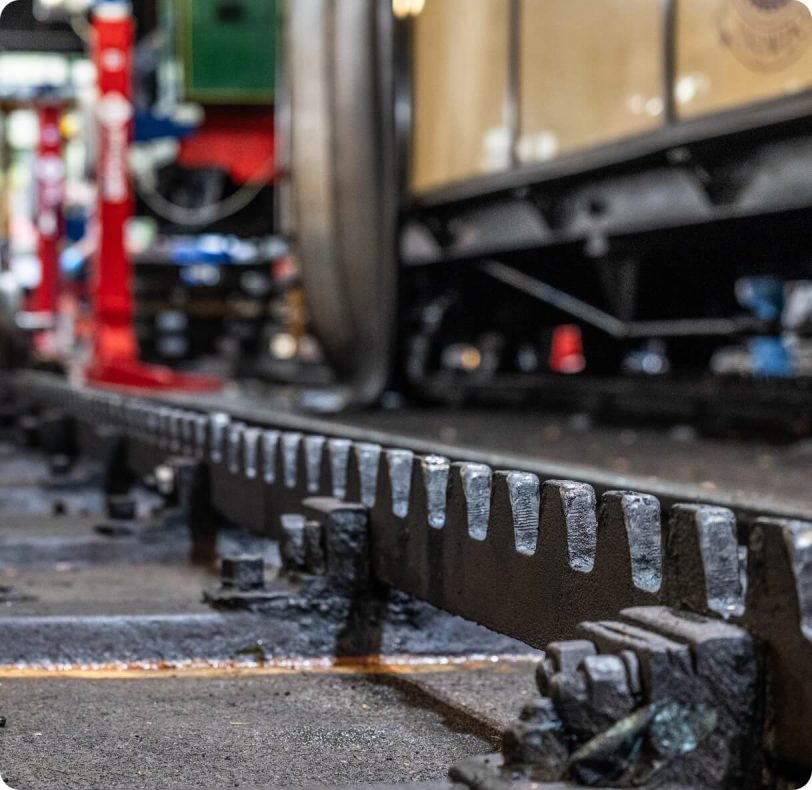
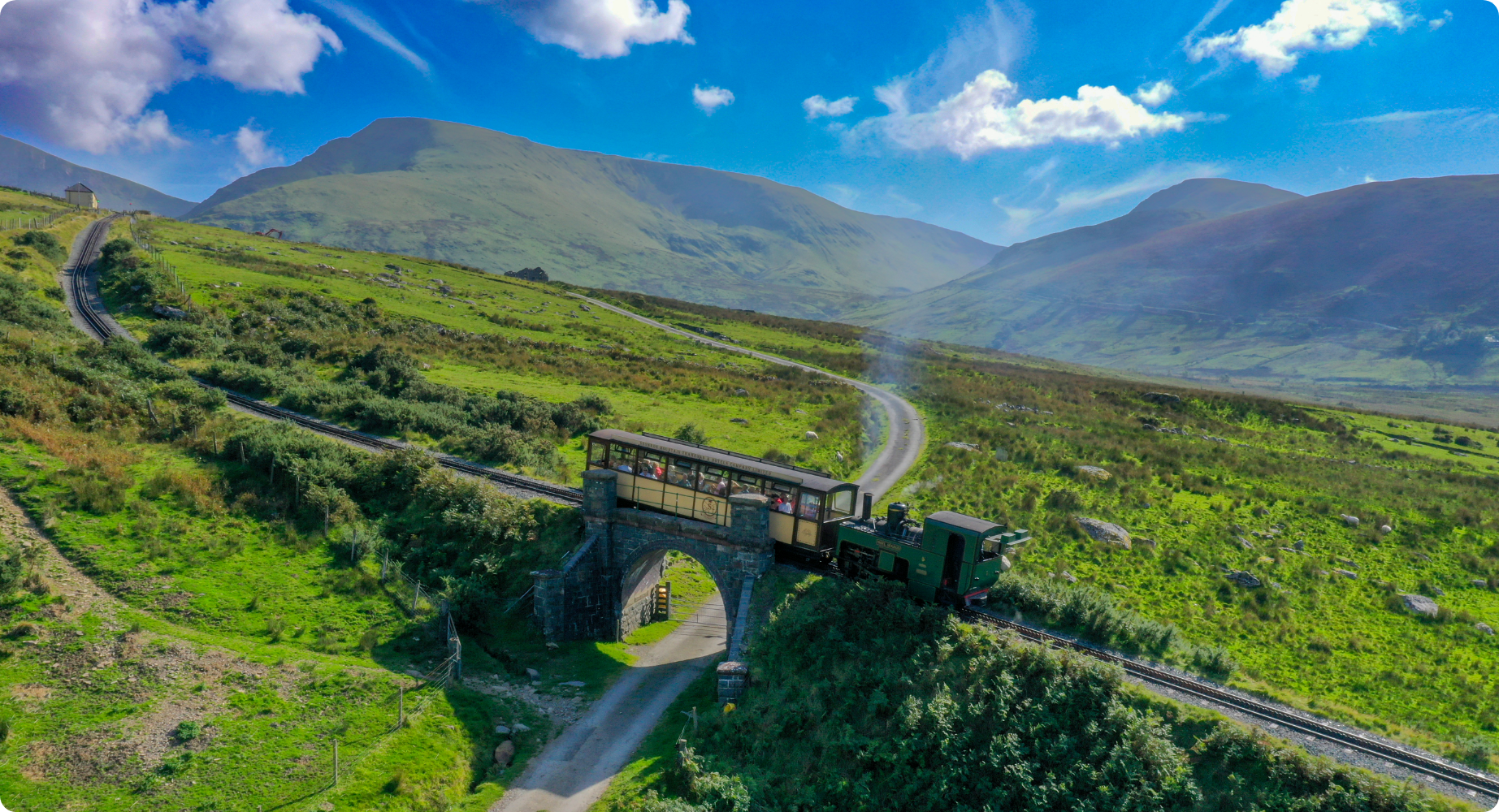
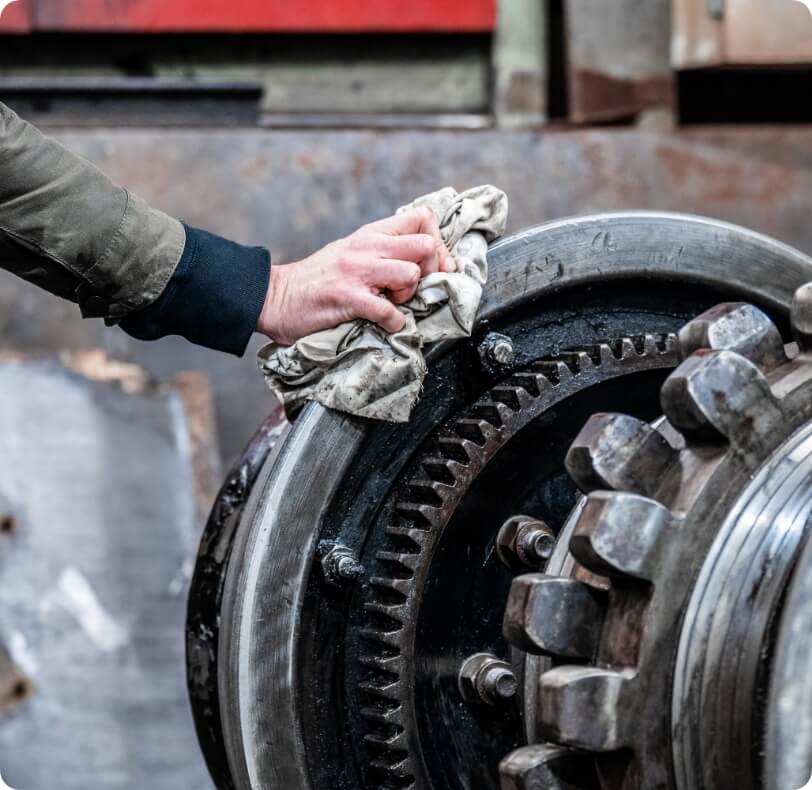
Our rack utilises a pair of toothed racks offset by one tooth and two driven axles on each locomotive, each axle with a pair of pinions. This ensures there are two teeth fully engaged at all times to increase safety. The braking system also uses the rack to slow and stop the trains with the brakes fitted to the pinion axles on the locomotives and carriages.
Snowdon is unique in rack railways by having a derailment protection device fitted on either side of the rack, which engages with fittings under each carriage and locomotive to ensure the vehicle can’t lift out of the rack.
The Snowdon track was designed in Switzerland in 1895, meaning the track and rolling stock are metric. The track gauge is 800mm (or 2 ft 71/2 inches) between the rails. The total track length is 4.7 miles (7.53 km) with a steepest gradient of 1 in 5.5 (or 1 m rise every 5.5 m travelled).
Snowdon Mountain Railway is the only public rack and pinion railway in the United Kingdom.
Technical information
The railway
The railway is laid to a gauge of 2 ft 7 ½ in (800 mm), which is common to most mountain railways. It consists of a single track with three passing loops spaced equidistantly between Llanberis and the summit, with Hebron at 1069 ft (326 m), Halfway at 1641 ft (500 m) and Clogwyn at 2556 ft (779 m). The average speed of the trains is 5 mph (8 kph).
The gradient
The total length of the railway is 4.7 miles and 1188 yards (7.53 km), with an average gradient of 1 in 7.86. The steepest gradient on the route is 1 in 5.5. The gradients on the route make it unsuitable for a normal adhesion railway, so a rack and pinion system was installed.
Traffic control
A Traffic Controller at Llanberis, who is responsible for the overall movement of traffic, controls the movement of trains. Communication between Llanberis, Clogwyn and the summit, as well as the guard of each train, is by means of two-way radios.
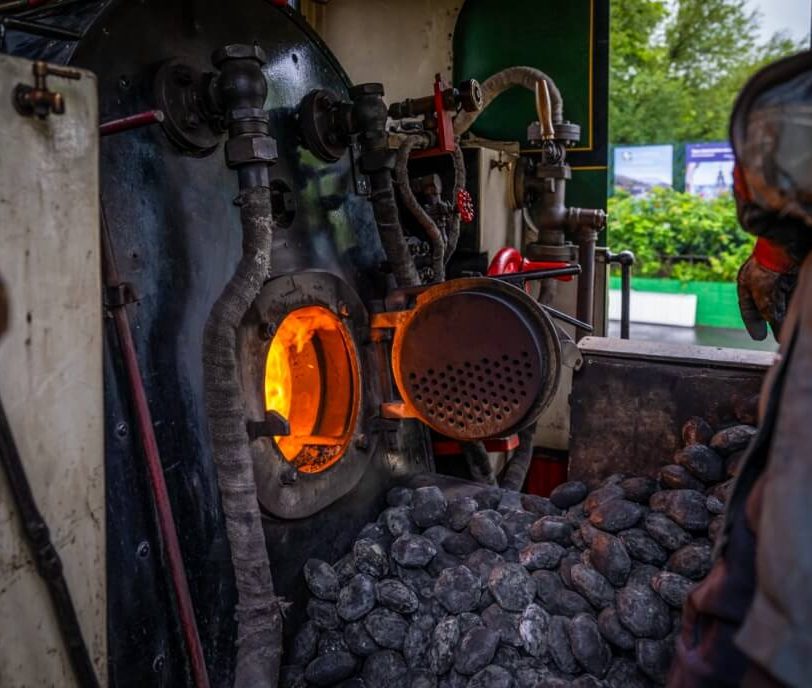
Our trains
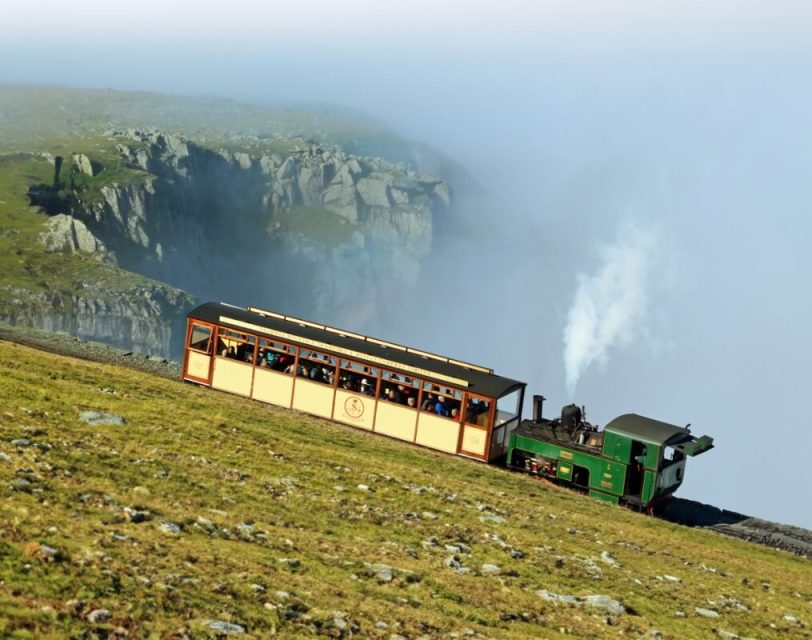
Steam locomotives
The company currently operates three coal-fired steam locomotives manufactured by the Swiss Locomotive & Manufacturing Co. of Winterhur. Two of the original ones date back to 1895 and 1896. The first of the original locomotives cost £1,525.
The boilers are inclined on the locomotives to ensure the boiler tubes and the firebox remain submerged while on the gradient, a standard practice on mountain railways. The locomotive always runs chimney first up the mountain pushing a single carriage in front of it. For safety reasons, the carriage is not coupled to the locomotive.
Diesel locomotives
Between 1986 and 1992 the company took delivery of four British-built diesel locomotives to complement the steam fleet at a cost of £250,000 each. These locomotives are powered by 320 horsepower (238 kW) six-cylinder turbocharged Rolls Royce diesel engines of 12-litre capacity, manufactured by Hunslet Engine Co. Leeds.
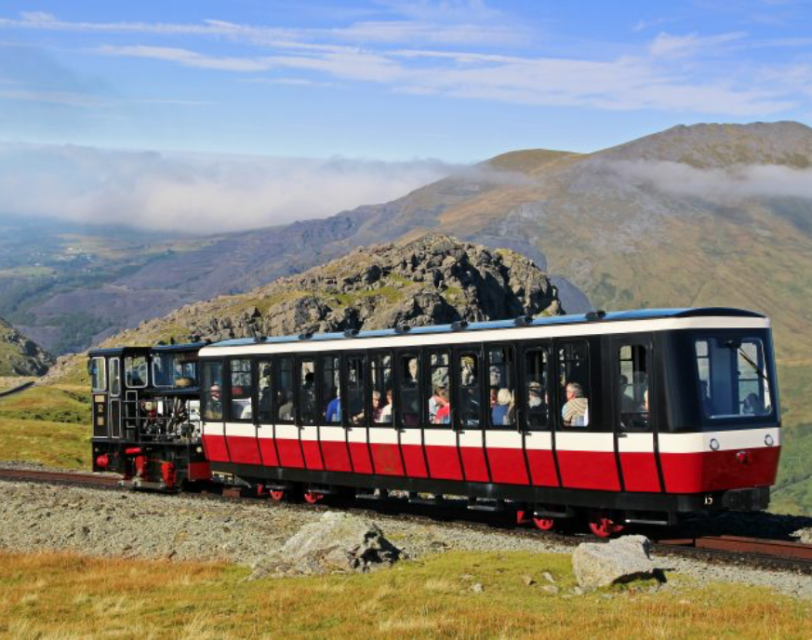

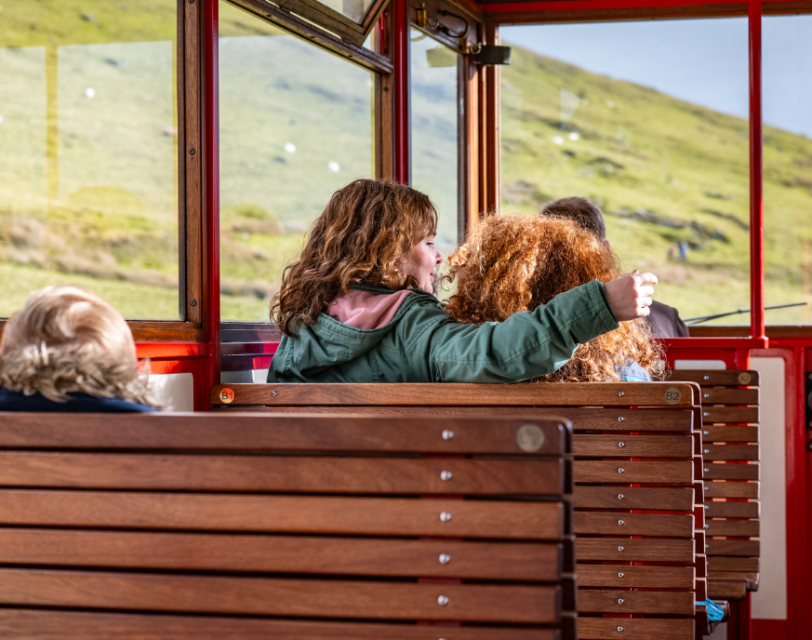
Carriages
The original carriages were open above the waist and had canvas curtains, which provided little protection against the elements. Between 1951 and 1957, the superstructure of the original carriages was modified to produce the enclosed bodies. Each of these carriages had a capacity of 56 passengers, plus a guard. Every passenger carriage had its own set of pinions, with automatic brakes as an added precaution. If the train’s speed exceeded 7.5 mph for any reason, the brake came on.
In 2012, the first of four new diesel carriages was delivered to Snowdon Mountain Railway with the remaining three due for delivery in early 2013. These new carriages were designed and built in the UK by a partnership between Garmendale Engineering Limited of Ilkeston, Derbyshire and the Hunslet Engine Company, to a performance specification defined and project managed by us.
Not only do the carriages boast higher levels of passenger safety, space and comfort, but the manufacturing process is a world first in the rail industry. Although the material chosen for the carriage body had been used in the production of road freight vehicles in the recent past, it has never been used in the production of rail vehicles.
Combining strength and thermal insulation characteristics with extremely low weight made the choice of this material particularly appropriate for our carriage project. The new carriages also have a stunning new livery, which will be reflected on the diesel locomotives. This choice has also allowed us to increase the capacity of each carriage from the current 56 to the new capacity of 60 without a change in seating space from previous carriages. In addition to this higher carrying capacity, all four diesel carriages have wheelchair access, therefore allowing more users the opportunity to travel every day.
The carriage bogies were designed and built by Hunslet Engine Company at the home of their parent company, LH Group, in Barton under Needwood. Rather than a revolutionary design, the bogies represent an incremental improvement to an existing design that has been in passenger service since 1986 and later improved in 2006 on the old carriage number 10 and the summit project flatbed truck. In this way, Hunslet has built on a solid safety record but improved the performance of this safety-critical piece of equipment. Some of the original carriages have been updated with new bodies constructed on them for the new Heritage Steam Experience.

